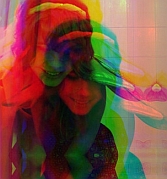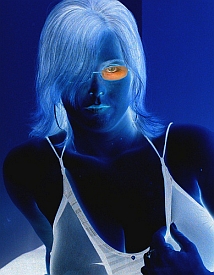 Well, when you are an amateur blogger such as myself there undoubtedly come a time when you have to say that you screwed something up. Now is this time, and it’s taken me over a year to admit it! The reason being that over a year ago I started a series entitled Augmented Reality: The Good, The Bad and the Ugly. The Good and The Bad were covered in due course, however the third part – The Ugly – never saw the light of day. This was for a number of different reasons, the primary one being apathy, but now is the time to finally rectify the situation and finish off the AR trilogy!
Well, when you are an amateur blogger such as myself there undoubtedly come a time when you have to say that you screwed something up. Now is this time, and it’s taken me over a year to admit it! The reason being that over a year ago I started a series entitled Augmented Reality: The Good, The Bad and the Ugly. The Good and The Bad were covered in due course, however the third part – The Ugly – never saw the light of day. This was for a number of different reasons, the primary one being apathy, but now is the time to finally rectify the situation and finish off the AR trilogy!
Moving on then, if you haven’t read the previous two sections then you can find them here:
Augmented Reality: The Good, The Bad and the Ugly (Part One: The Good)
Augmented Reality: The Good, The Bad and the Ugly (Part Two: The Bad)
Now that you’ve had a look at those (and now that I’m slightly ashamed by my earlier writing style being paraded out once again) let’s move onto the most controversial and hardest part of this series: The Ugly.
It’s difficult to say what makes something ‘ugly’ as opposed to merely ‘bad’, but what I am going for is the distinction between things which are annoying and those which are violating. Augmented reality shopping advertisements are annoying; having your medical records displayed to all those who you walk passed in the street is violating…and with that:
CPTV
With our first entry, let’s coin a new phrase: Complete Profile Television (CPTV). We already know that facial recognition technology is being incorporated into standard CCTV technology, and sooner or later augmented reality is going to play a role as well. We can see how this works with current early generation AR; your personal information will be displayed alongside your movements simply by walking down the street.
It’s quite an easy implementation to imagine, and one that will undoubtedly come to pass. Now, for many people who are concerned about national security and who fall back on the ‘if you’re not doing anything wrong, who cares?’ argument it might not seem like such a big deal. However, we can also see at least two scenarios in which this merging of surveillance and augmented reality can quickly turn into an ugly scenario.
The first scenario is one of social profiling. Maybe you bought a few books that have been flagged as ‘suspicious’ (particularly when combined as multiple purchases); maybe you go to one too many protests that turned a bit violent (even though you had no part to play in any illegal activity); maybe you happen to regularly be seen walking around places that are considered to be ‘sensitive’. Whilst each of these by themselves probably won’t get you flagged up as suspicious any time soon, the combination of them almost certainly will – and it will be displayed in real-time and highlighted for all security and police personal both watching you from above and on the ground.
Citizen harrassment will undoubtedly increase when such technology is implemented, if only because the reliance on social profiling is a technique that does actually lead to some very useful and legitimate breakthroughs against criminals and terrorists. The problem is, this very same profiling could literally have you walking around as a ‘marked man’.
The second scenario is one of error, and error is something that databases full of information are renowned for. A few wrong database entries, or incorrect cross-searches, and all of a sudden you are highlighted and marked through an augmented reality platform as a high risk individual. Possibly even one that needs to be stopped immediately, and with any force necessary. The unfortunate mistaken deaths of a number of innocent people over the years, such as the Brazilian Jean Charles de Menezes, has proven that these drastic errors can and do occur. Augmented reality when used under a CPTV context will only serve to ensure that they happen again at some point in the future. It’s likely an acceptable risk for society as a whole to take, but for the person who is literally caught in the cross-fire…
Augmented Bullying and Harassment
This next ‘ugly’ implementation of AR is kind of a citizens extension of the CPTV concept. One of the early, and some would say pivotal, aspects of AR technology is the ability for users to add their own information and data – a kind of virtual graffiti that actually has some really interesting and creative uses in turning the urban landscape into a playground of our collective imaginations. But what happens when a group of individuals want to target you through such technology to your detriment? Consider the typical bullying scenario, that of your average high-school.
An augmented reality environment in a high-school would likely be completely out of the control of any school authorities – it would be possible for it even to be an invisible aspect of the schools social and ‘physical’ landscape. Now, the bullies don’t need to write lewd messages about somebody on a bathroom wall – instead they insert them into whatever is the peer groups most popular AR application.
You could say that at least this way, the intended victim could more easily ignore any such taunts. But with AR, those taunts could follow them around whether they wished to acknowledge them or not – it would be the ‘kick me’ sign brought to its most violating conclusion. Schools are often nasty environments that bring out our worst instincts – and augmented reality is going to be a powerful tool in the ruthless world of primate oneupmanship.
 Before moving on, just quickly imagine such things emerging in the even more ruthless adult world. There are countless sites on the internet that relish in the thought of seeing you naked, even (and often, especially) if you are unaware that a previous person you trusted had divulged those ‘intimate’ photos that you swore would be deleted straight away. Now, what do you think the chances are of an AR application that takes those photos and finds a way to display them alongside you as you walk down the street – completely oblivious to the absolutely despicable violation of your privacy that is occurring? If the internet has taught us anything, it’s that if something like this is possible; it will happen.
Before moving on, just quickly imagine such things emerging in the even more ruthless adult world. There are countless sites on the internet that relish in the thought of seeing you naked, even (and often, especially) if you are unaware that a previous person you trusted had divulged those ‘intimate’ photos that you swore would be deleted straight away. Now, what do you think the chances are of an AR application that takes those photos and finds a way to display them alongside you as you walk down the street – completely oblivious to the absolutely despicable violation of your privacy that is occurring? If the internet has taught us anything, it’s that if something like this is possible; it will happen.
Augmented Terrorism
It might seem that quite often this blog rails against the government over one breach of human rights or another – but with this entry I want to highlight the very real dangers that augmented reality will represent when it comes to assisting in violent or terrorist attacks on civilian populations. Area schematics and other pertinent information could instantly be shared amongst co-conspirators – even so much as seeing exactly where each other are and at what point in time they are going to act.
High-profile targets could be tagged and then tracked through a crowd of any size; densely populated areas could be monitored and shown exactly when they have reached a peak density for maximum devastation; police and security personnel could be collectively monitored in real-time and an action could be co-ordinated to occur at the exact moment that they are least able to respond. Yes, all of these things can and do happen right now – but the point is that augmented reality will increase their efficiency and utility to an astonishing degree. The response will be for the authorities to implement strategies (such as CPTV) to combat these new tools, and the vicious circle continues all the while eroding innocent civilians of both our safety and our privacy simultaneously.
Conclusion
Synchronisation of information is one of the great strengths that augmented reality technology will provide us, but it is also this that will bring about its most ugly applicaitons. Of course, any technology can be used for nefarious purposes; and I’m certainly not advocating that we hold back on the very real benefits that a truly augmented society will be able to reap.
However, as I have said before, if we are not aware of negative consequences then the chances of them occurring increase drastically. If we do not keep in mind just how AR technology could be used to very literally violate and endanger lives then we will not be ready to combat such instances when they inevitably occur.
Augmented reality is definitely something to look forward to, but it’s also going to bring with it some ugly manifestations. Hopefully we will overcome them as a society, or at the very least be informed enough to be able to try and stop them happening to ourselves.




